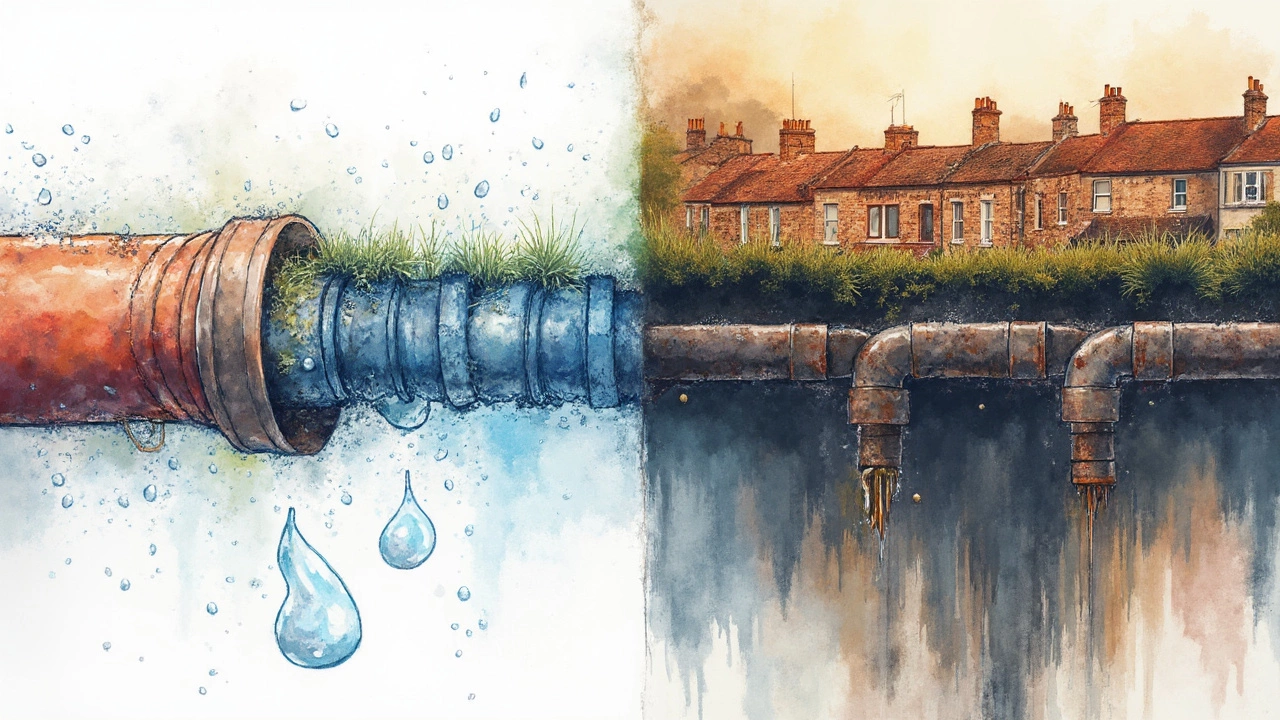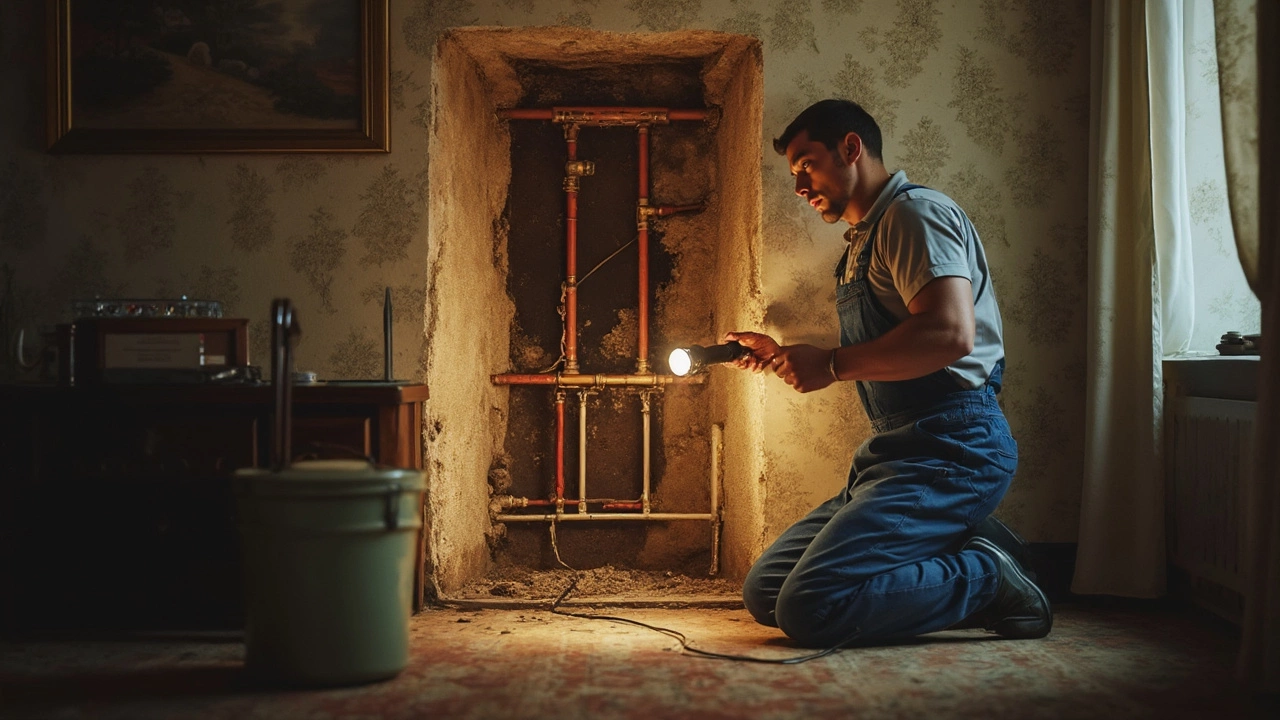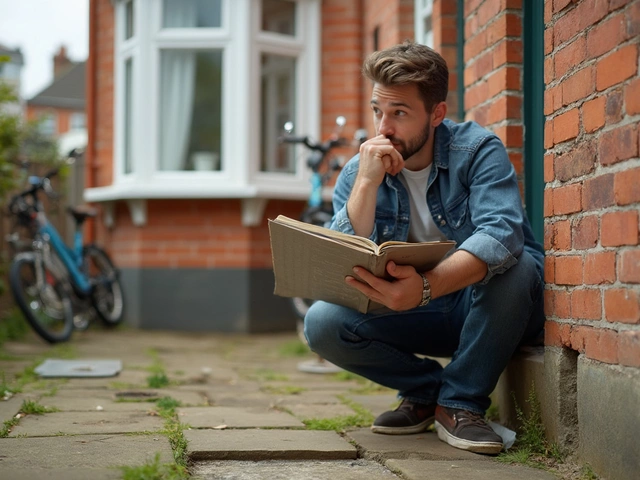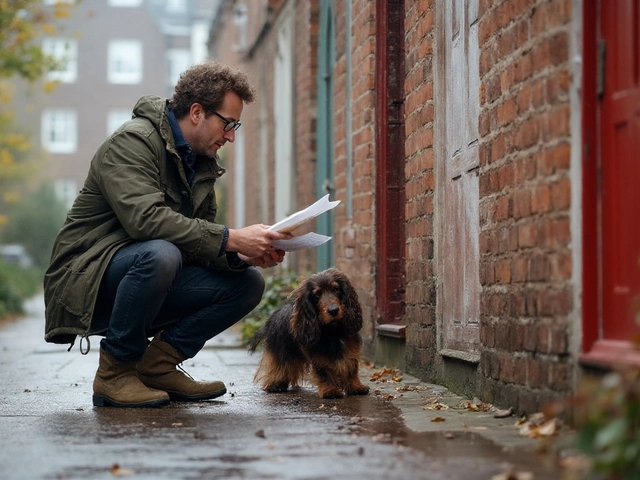Ever wondered what could drain your wallet faster than a leaky pipe? Well, it's plumbing, for sure. Hidden behind your walls and floors, it's like an unseen highway of pipes and faucets. When things go south here, the repairman visits can get pretty pricey.
Why is plumbing so costly to fix, you ask? For starters, plumbing issues aren’t easy to spot right away. You might have a small leak growing into a big problem over time, slowly damaging structures and spiking your water bills.
But there's hope. Regular checks work wonders, catching leaks before they cascade into chaotic waters. It’s much cheaper to address niggling problems than to let them fester into full-blown pipe catastrophes. Plus, knowing what signs to look for can be the difference between a quick fix and an expensive overhaul.
Of course, plumbing is not the only expensive fix out there. Don’t forget about foundation woes or roof repairs—those can cost a pretty penny as well. But tackle the small problems before they swell, and you might just save yourself a small fortune.
- The Costliest Culprit: Plumbing
- Signs of Plumbing Problems
- Preventive Measures
- Other Big-Ticket Repairs
- Hiring the Right Professionals
- Saving Money in the Long Run
The Costliest Culprit: Plumbing
When it comes to home repairs, plumbing tops the list as the priciest offender. Why is it so heavy on the wallet? Well, your home's plumbing system is a complex web of pipes, fixtures, and connections. When something goes wrong, it often requires digging into walls or beneath floors, adding labor costs to an already expensive repair.
Common Plumbing Issues
Some of the most common and expensive plumbing problems include burst pipes, sewer line repairs, and water heater replacements. A burst pipe can cause water damage, mold, and all sorts of chaos. Sewer lines, often due to tree roots or simple wear and tear, are costly to replace because they involve digging up yards or driveways.
How Much Can It Hit You?
On average, plumbing repairs can range from a few hundred to several thousand pounds depending on the severity. For instance, a basic pipe leak might just cost you around £100, while replacing a sewer line can soar upwards to £4,000 or more.
Prevention Tips
Regular maintenance is your best defense against plumbing fiascos. Checking for leaks, insulating pipes during winter, and having regular inspections can help nip potential problems in the bud.
Don't Forget About Water Heaters
Your water heater is another important aspect of your plumbing system. On average, replacing a water heater costs anywhere from £500 to £1,200. This can be avoided with regular flushing and maintenance.
In a nutshell, keeping an eye on plumbing issues and addressing them quickly can save you a chunk of change in the long run. It’s always better to spend a little today than a fortune tomorrow.
Signs of Plumbing Problems
Spotting plumbing issues early on can save you a ton of money and stress. So, what should you be on the lookout for? Here are a few telltale signs.
Water Pressure Woes
Ever turned on the tap expecting a strong flow, only to get a disappointing dribble? Low water pressure can mean there's a crack or a blockage somewhere in your plumbing system. This can be a big red flag for more serious issues lurking behind the scenes.
Pesky Leaks
Leaks are often the easiest to spot—but the hardest to ignore. From your sink to the bathroom, even the smallest leaks can lead to oversized problems. Hearing constant drips when all taps are off? Time to call in the experts before it hits the big league.
Drain Drama
Slow drains? They’re a classic sign of plumbing trouble. Frequent blockages or slow-moving water could indicate deeper, unseen clogs in your pipes. Sometimes a simple plunging won't cut it.
Unusual Sounds
Noisy pipes can be an alert. Water hammering might sound cool (in a haunted house sort of way), but in reality, it can damage your pipes. It usually happens due to quick water stoppages or air bubbles caught in the system.
Soggy Spots
If you spot wet patches on walls, ceilings, or floors, it could mean your pipes are leaking behind the scenes. This needs urgent attention to avoid structural damage.
Keeping an eye out for these signs can help you nip those plumbing problems in the bud. Regular maintenance might feel like a chore, but it's worth it in the long run.
Preventive Measures
Prevention is better than a pricey repair bill, especially when it comes to home renovation and keeping your plumbing in check. A few simple steps can save you a headache and a hole in your pocket.
Regular Inspections
Get into the habit of checking pipes under the sink, around the toilets, and your water heater. Look for any signs of rust, moisture, or minor leaks. Your eyes can spot problems before they spiral out of control.
Quick Fixes
If you spot a small leak, don’t wait. Quick action prevents minor issues from turning into major house repairs. Use a trusty sealant or call a plumber if things look tricky.
Water Pressure Matters
Keep an eye on your water pressure. High pressure can strain pipes and lead to breaks eventually. A pressure gauge can be your best mate here. Ideally, home pressure should sit around 40 to 80 psi.
Avoid Chemical Drain Cleaners
While they’re tempting for a quick fix, these cleaners can corrode pipes over time. Opt for enzyme-based drain cleaners instead.
Seasonal Checks
Before winter hits, make sure to insulate outdoor faucets and pipes. Frozen pipes are a disaster waiting to happen—same goes for any holiday season that's bound to have extra house guests using the facilities more often.
- Insulate exposed pipes during colder months.
- Turn off outdoor taps and let them drain properly.
- Set the interior heat to at least 12°C (54°F) at all times to prevent indoor pipes from freezing.
And remember, spending a little time on prevention not only saves you from big repair bills, but also gives you peace of mind knowing your plumbing is ticking along nicely.

Other Big-Ticket Repairs
Beyond plumbing, some repairs stand out as truly expensive monsters. Let's go on a brief tour of the ones most likely to burn a hole in your pocket.
Foundation Fixes
Your home's foundation is like the backbone of your house, and problems here are nothing short of serious. From cracks due to soil movement to water damage, fixing foundations can set you back thousands. It's not just about the money, but the worry of your home literally being on shaky ground!
Early signs of foundation troubles? Look for doors that won't close properly, or cracks along the walls or floors. Ignoring these can lead to significant structural problems over time.
Roof Repairs or Replacements
A sturdy roof over your head is non-negotiable, but replacing shingles or dealing with leaks can be costly. Heavy storms, age, or poor installation can cause heaps of damage. Regular inspections can help catch potential issues before they evolve into a full-scale replacement job.
- Check for missing or cracked shingles
- Inspect for leaks or water stains in the attic
- Keep gutters clear to prevent water buildup
Electrical Rewiring
Old or faulty wiring can be a major safety concern, leading to electrical fires. Upgrading the system or addressing malfunctions not only brings peace of mind but also ensures your home is up to code.
Watch for flickering lights or circuit breakers tripping often—these could be signs yelling for attention.
HVAC System Overhaul
Heating, Ventilation, and Air Conditioning systems keep homes comfortable, but when they're on the fritz, your comfort—and wallet—suffers. Regular maintenance can prolong the life of these systems, but when they're beyond repair, replacements can be staggering. An efficient HVAC system can, however, lower your energy bills, offering some future savings.
While these big-ticket repairs can be daunting, staying proactive with regular inspections and maintenance is your first line of defense. Prioritize problems as they arise and tackle them head-on—your home and budget will thank you in the long run.
Hiring the Right Professionals
Finding the right professional to tackle your plumbing and other home renovation needs is crucial. It's not just about picking any tradesperson; it's about choosing someone who knows their stuff and won’t cost you more in the long run.
Research and Recommendations
Start by asking around. Your neighbors, friends, or family have probably hired someone they trust. Word-of-mouth remains a gold standard for gauging reliability. Check online reviews too. Websites like Trustpilot or Yelp can offer insights into the track record of potential hires.
Verify Credentials
Always, and we mean always, verify their credentials. In the UK, plumbers should be properly certified, often with a Gas Safe registration if they're dealing with gas appliances. It's worth the extra time to confirm their certifications. Finding someone reliable can save you a heap of trouble and cash.
Get Multiple Quotes
Never settle for the first quote you receive. It might be tempting to go with the cheapest option, but remember, you often get what you pay for. Get at least three quotes to understand what's a fair price for the job.
Understand the Contract
Once you've zeroed in on a professional, ensure there's a clear contract outlining the scope, cost, and timeline. This prevents any sneaky cost creep and gives you a document to fall back on if disputes arise.
If you're dealing with extensive house repairs, sometimes the cheapest initial quote isn't the best choice long-term. Carefully consider both experience and cost when making your decision. Hope this helps you find someone perfect for your expensive fix needs!
Saving Money in the Long Run
Thinking about the future of your home can sometimes feel overwhelming, especially when it comes to big-ticket repairs like the **plumbing**. But the good news? You can cut down those hefty repair bills with a few proactive steps.
Regular Maintenance is Key
One of the easiest ways to save money is through regular maintenance. Make it a habit to check your home's plumbing system every six months. Look for leaks, rust, or strange noises. A little upkeep can go a long way and is way cheaper than dealing with full-blown **plumbing** disasters.
If you're not too confident about inspecting the plumbing yourself, consider hiring a professional for a small fee. The cost of a check-up is much less than a major repair, and professionals can spot issues you might miss.
The Power of Upgrades
Another strategy? Upgrade when it makes sense. If your pipes are older than your dad's favorite vinyl collection, they might be ready for an update. Newer materials, like PEX or CPVC, can be more durable and less prone to leaks compared to older iron or copper pipes.
Get Smart with Water Usage
Pay attention to your water consumption. Technologies like low-flow toilets and fixtures can save water and reduce strain on your **plumbing**. Over time, they’ll slash your bills and reduce the risk of issues.
Also, avoid using chemical drain cleaners. They might seem like a quick fix, but they can damage pipes, leading to costly repairs down the line. A simple mix of vinegar and baking soda can often do the trick without harm.
Prepare for the Unexpected
Even with the best precautions, sometimes, things can go wrong. A home warranty covering everything from **plumbing** to appliances might be worth considering. It could cover significant costs that come with unexpected breakdowns, providing peace of mind.
| Tip | Potential Savings |
|---|---|
| Regular maintenance checks | Up to 30% off repair costs |
| Installing water-saving devices | Reduce water bills by 10% |
| Upgrading old pipes | Prevent costly emergencies |
Remember, tackling these issues head-on might seem like a hassle now, but in the long run, it pays off in savings and peace of mind. So, take the plunge and ensure your home's **plumbing** won’t turn into a money pit.





